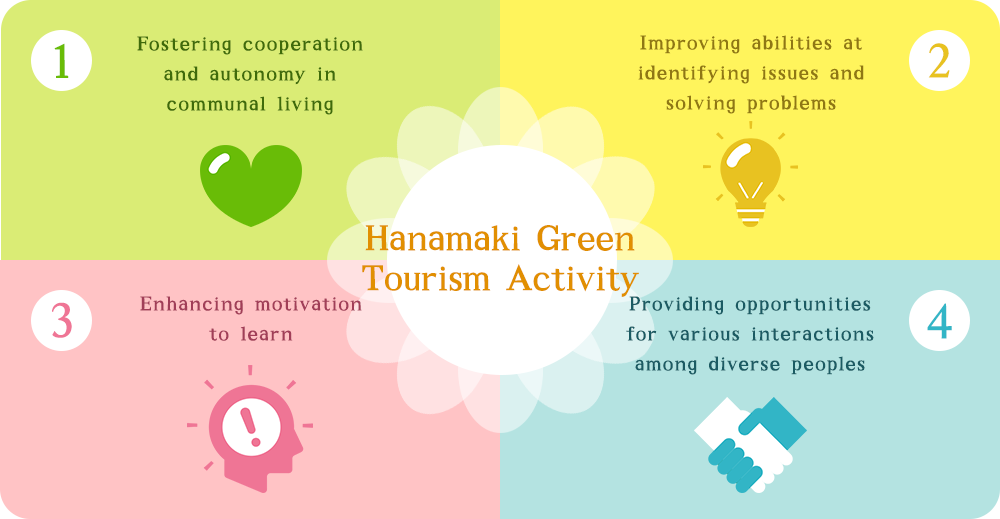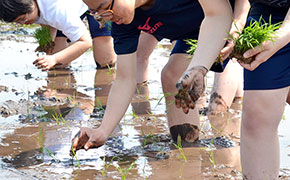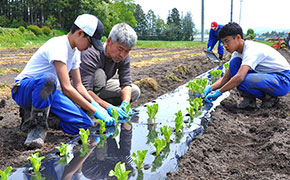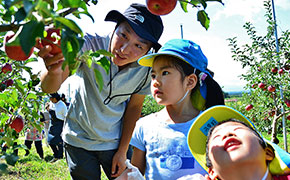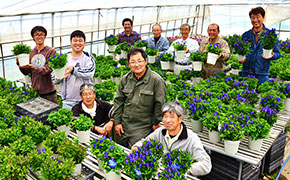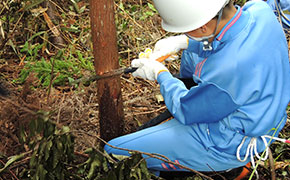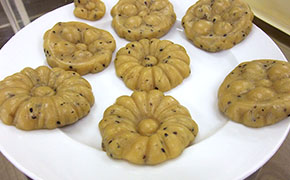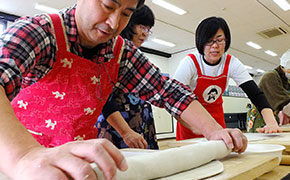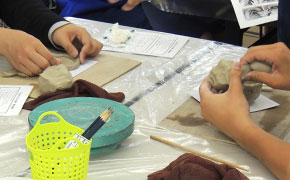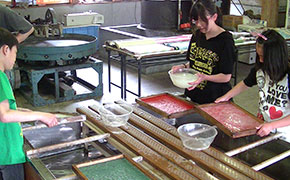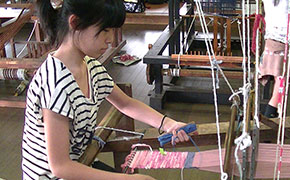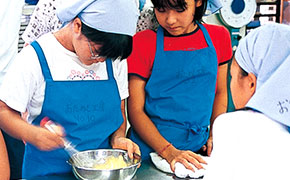Send your heart out into the galaxy and your mind to the earth with a journey to the home of Miyazawa Kenji
With the Home of Miyazawa Kenji: Hanamaki Green Tourism, you can learn the splendor of nature and the importance of food and agriculture as well as feel the warmth of people’s hearts. See, hear, eat, feel, and sense to enjoy with all five senses.
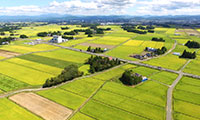
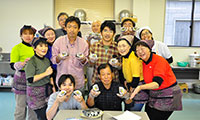
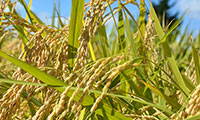
The refreshing breeze of Hayachine
Hanamaki-Ihatov is filled with both serenity and vitality

Hanamaki, home of the world renowned Miyazawa Kenji, is located near the center of Iwate with the Ou Mountain Range to the west, the Kitakami highlands to the east, and the Kitakami River flowing through the city center. This land that Kenji named “Ihatov” produces rice primarily, but also makes many other products including millet, vegetables, fruits, livestock, and flowers. Additionally, it is one of the three great centers of Japanese sake production, home of the “Nanbu Toji” and active in making some of the most renowned wine in Japan. Thus with this environment, Hanamaki is an ideal area for “Green Tourism” and is waiting for your visit.
Access to Hanamaki
- Expressway
- Tohoku Expressway
- Kawaguchi JCT ⇔ Hanamaki-Minami IC
(Approx. 6 hours) - Aomori IC ⇔ Hanamaki-Minami IC
(Approx. 2 hours and 30 minutes) - Sendai-Miyagi IC ⇔ Hanamaki-Minami IC
(Approx. 1 hour and 50 minutes) - Hiraizumi-Maesawa IC ⇔ Hanamaki-Minami IC
(Approx. 30 minutes) - Hanamaki IC ⇔ Hanamaki-Minami IC
(Approx. 5 minutes)
- Kawaguchi JCT ⇔ Hanamaki-Minami IC
- Akita Expressway
- Akita-Chuo IC ⇔ Hanamaki-Minami IC
(Approx. 2 hours)
- Akita-Chuo IC ⇔ Hanamaki-Minami IC
- Kamaishi Expressway
- Towa IC ⇔ Hanamaki-Minami IC
(Approx. 15 minutes) - Hanamaki Airport IC ⇔ Hanamaki-Minami IC
(Approx. 5 minutes) - Miyamori IC ⇔ Hanamaki-Minami IC
(Approx. 30 minutes) - Tono IC ⇔ Hanamaki-Minami IC
(Approx. 45 minutes)
- Towa IC ⇔ Hanamaki-Minami IC
- Tohoku Expressway
- Rail
- Tohoku Shinkansen
- Tokyo Station ⇔ Shin-Hanamaki Station
(Approx. 3 hours and 10 minutes) - Sendai Station ⇔Shin-Hanamaki Station
(Approx. 1 hour) - Shin-Aomori Station ⇔Shin-Hanamaki Station
(Approx. 1 hour and 30 minutes) - Morioka Station ⇔ Shin-Hanamaki Station
(Approx. 12 minutes)
- Tokyo Station ⇔ Shin-Hanamaki Station
- Akita Shinkansen
- Akita Station ⇔ Shin-Hanamaki Station
(Approx. 2 hours)
- Akita Station ⇔ Shin-Hanamaki Station
- Tohoku Honsen
- Morioka Station ⇔Hanamaki Station
(Approx. 40 minutes)
- Morioka Station ⇔Hanamaki Station
- Hokkaido Shinkansen
- Shin-Hakodate-Hokuto Station ⇔ Shin-Hanamaki Station
(Approx. 2 hours and 30 minutes)
- Shin-Hakodate-Hokuto Station ⇔ Shin-Hanamaki Station
- Tohoku Shinkansen
- Airplane
- Sapporo (Shin-Chitose) ⇔ Iwate Hanamaki Airport
- (Approx. 1 hour)
- Nagoya (Nagoya Komaki) ⇔ Iwate Hanamaki Airport
- (Approx. 1 hour and 10 minutes)
- Osaka (Itami) ⇔ Iwate Hanamaki Airport
- (Approx. 1 hour and 20 minutes)
- Fukuoka ⇔ Iwate Hanamaki Airport
- (Approx. 2 hours)
*It’s about 10 minutes by taxi from Iwate Hanamaki Airport to Shin-Hanamaki Station
- (Approx. 2 hours)
- Sapporo (Shin-Chitose) ⇔ Iwate Hanamaki Airport
List of Available Experiences
Expected education results
